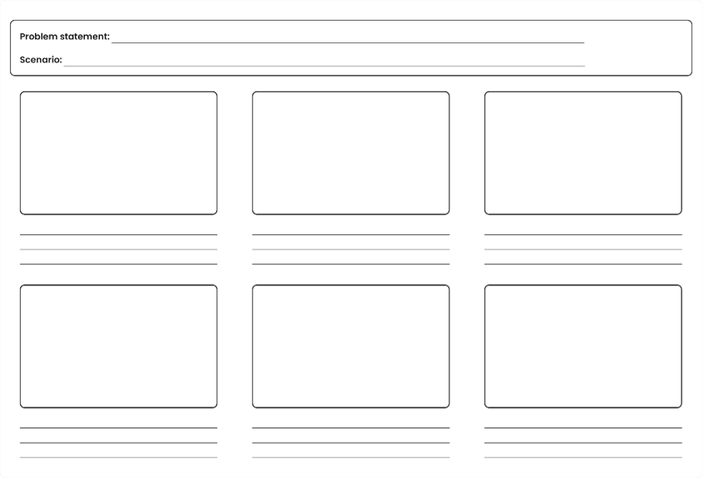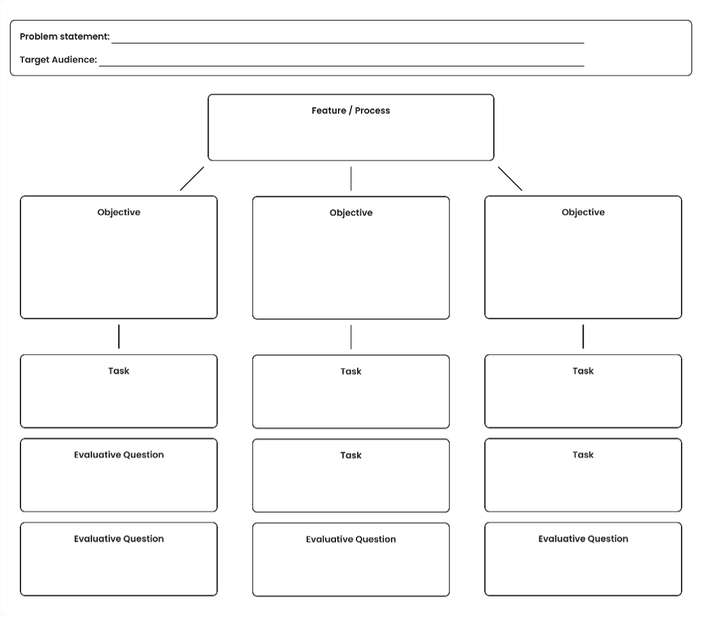
June 03, 2024
Change can be scary. When considering making a change at work, you may think, “What if we implement a new procedure and it doesn’t work?,” or “What if this new business structure doesn’t yield the results we intend it to?”
It’s perfectly normal to have these questions when making any level of change within your organization, but with a little testing, you can answer these questions, make the proper adjustments, and ensure that you see the intended outcomes you wish to accomplish while supporting those directly affected by these changes.
So, how can you test something as abstract as a policy change?
Storyboarding is a great tool that allows you to craft a narrative that demonstrates how policies, services, and any other intangible changes will impact an organization, its workforce, and customers. By crafting a narrative, you can test out your idea through prototyping to receive feedback on your plans, adjust your plans based on feedback, and implement a plan you feel confident will succeed.
A storyboard has three main segments:
Generally, limiting your storyboard to four to six segments gives you enough space to tell the full narrative of the problem you’re looking to solve while keeping your research participants engaged.
Visual depictions of each step of your storyboard helps create immersion to your narrative. Even if you don’t feel like you’re an artist, everyone has the capability to communicate visually! Stick figures are highly encouraged to help bring to life each stage of your storyboard and help your participants understand the impact of your story. Here’s a storyboard template to help you get started.
• Find your participants. When looking for participants, you should seek out individuals who will be directly affected by the service or policy you are implementing and who will be implementing the policy or service. You’ll need between 30 and 45 minutes of their time to have them review your storyboard and answer any follow-up questions you have for them.
• Craft your questions. The questions needed to test your prototype will need to be open ended to allow honest feedback from your participants without leading their answers, but targeted enough to ensure you get the information you need to test your policy or service.
Use the graphic below to help you get started.
You’ve created your storyboard, and you’ve tested it. Now it’s time to analyze the results! Start by asking yourself: What went according to expectations? What didn’t? What areas of improvement were identified?
Based on your results you’ll have either confirmed that the policy or service will impact your organization as intended or not. You may need to make a few small tweaks to move forward with the project, but you may also need to go back to the drawing board to find something that will work better for your intended audience.
If you did make a lot of changes, retesting an updated storyboard can help finalize and hone your policy or service to a place where you feel comfortable to launch.
Use storyboarding to refine your policies and procedures, gather early feedback, and ensure growth and support for all stakeholders, without the risk of a full launch.
Visit innovation.ibx.com for more information about innovation behaviors and tools.
This content was originally published on IBX Insights.
As a Senior Innovation Consultant for the Independence Blue Cross Innovation Team, Jaimie has a passion for research, seeing each opportunity as an adventure—searching for insights that can then be pieced together to form innovative solutions. Having spent the first four years with Independence Blue Cross as a UX Designer, Jaimie’s transition to the Innovation Team felt like a natural next step in their career to be able to expand on the design process and apply new and innovative ways to approach problem solving. Jaimie looks forward to encouraging and inspiring teams to collaboratively tackle any problem they may be facing.

